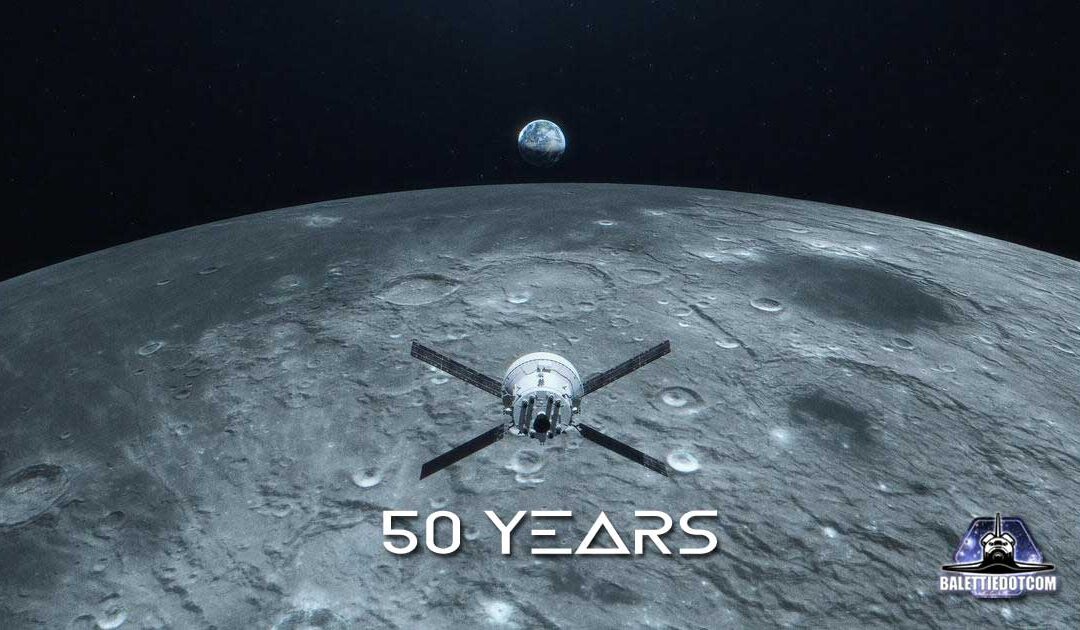The Artemis I mission occurred 50 years after Apollo 17. What will it take to not have this happen again?


The Artemis I mission occurred 50 years after Apollo 17. What will it take to not have this happen again?

Another round of travel journals for a visit to the beautiful Cotswold region of England.

Santa Claus. Father Christmas. Kris Kringle. St. Nicholas. Papa Noel. Me.

“13 Minutes to the Moon” – an excellent BBC podcast focusing on the behind-the-scenes heroes of Apollo 11 and Apollo 13.






The space exploration advocacy website of Roger Balettie, former Flight Dynamics Officer in NASA’s Space Shuttle Mission Control Center.
Select a menu tab to the left for detailed links or one of the main sections below:
The Flight Dynamics Officer (FDO, pronounced “fido”) is a Flight Controller in the Mission Control Center responsible for the overall trajectory, or flight path, of the Space Shuttle and all related payloads or other space-bound vehicles associated with the Shuttle.
"Houston… Tranquility Base here. The Eagle has landed."
Since 1965, the Mission Control Center (MCC) has been the nerve center for America’s manned space program.
Space- and NASA-based blog entries.

The Artemis I mission occurred 50 years after Apollo 17. What will it take to not have this happen again?

“13 Minutes to the Moon” – an excellent BBC podcast focusing on the behind-the-scenes heroes of Apollo 11 and Apollo 13.

It’s been 40 years since the launch of STS-1, and the excitement of that day never faded.
As we moved from the early days of Mercury, Gemini, and Apollo to the Space Shuttle and Space Station Programs, the Mission Control logo evolved as well. This iconic logo was originally designed as an inspiration for the Flight Controllers, but it has become a symbol of the men and women who have dedicated their lives in support of Manned Spaceflight. It’s appeared on everything from clothing to coffee mugs (I have more than a few of them myself).
This section of -THE TRENCH- provides a history of the logos from the earliest days through current mission support.
(text credit: Mike Scott (archive.org copy) – website currently offline)
The MOD emblem was originally developed for the mission control team in 1973 to recognize their unique contribution to the manned space program, from Mercury, though Gemini, to Apollo.
From the book “Failure Is Not An Option”, Gene Kranz tells the story of its genesis:
As the [last Apollo] mission went forward, I felt increasingly frustrated and melancholy. I would often sit in the corner of the viewing room, silently watching the teams at work… I also thought about the legacy of my generation: trust, values, teamwork.
I wanted to be a living connection between the new generation of mission controllers, reminding them of how and where it all started with my generation and where theirs might take us in the future.
Bob McCall, in my belief the premier artist of space, had been sitting on the step to the right of the Flight Director console, sketching during the final Apollo EVAs. He had designed the Apollo 17 crew patch. When Bob took a break for a cup of coffee, I joined him in the cafeteria…
I don’t think Bob was surprised when I asked him to design an emblem for the Mission Control team. I spoke emotionally, from my heart and gut, about the control teams and crews, and our life in Mission Control.
We fought and won the race in space and listened to the cries of the Apollo 1 crew. With great resolve and personal anger, we picked up the pieces, pounded them together, and went on the attack again. We were the ones in the trenches of space and with only the tools of leadership, trust, and teamwork, we contained the risks and made the conquest of space possible.
Over the next six months, McCall developed the emblem worn proudly by every subsequent generation of mission controller. He inscribed his final rendering of the emblem: “To Mission Control, with great respect and admiration, Bob McCall 1973.”
As the Shuttle program completed its Orbital Flight Test program in 1983, the emblem was revised as the Mission Operations Directorate was formed from the consolidation of Flight Control, Mission Control Center facility, and Mission Planning and Design functions at the Johnson Space Center.
The Shuttle vehicle became a centerpiece of the design, and the banner changed from “Mission Control” to “Mission Operations” to inspire not only flight controllers but the contributions of the broader MOD team.
The decision was made to retain all of the other elements of the original design.
A further revision was made in late 2004, with the artistic help of graphic designer Mike Okuda, to incorporate the International Space Station into the design to recognize the achievements and contributions of the team supporting that program.
The emblem as depicted in the updated version incorporates or retains elements that honor our past achievements, fully recognize our present commitments, and place an eye toward the future.
The following summarizes the significant features for each:
In the mid-1990s, there was a major upgrade of Mission Control from the old Apollo-era consoles and computer systems to a more modern, distributed system. A new logo was quietly introduced.
It had a very “Star-Trek” feel to it, and while I thought it was cool enough, there were a lot of divided opinions on it. During that time and for a short while after, this updated MCC logo was used on various official documents. It appeared mostly on internal items. I don’t remember too many external viewings of it.
It’s still seen in the MCC, but the official logo was always the more traditional logo presented here.
In April of 2014, the MOD logo was updated to match the new NASA reorganization into the Flight Operations Directorate (FOD), combining Flight Crew and Mission Operations into one new organization. FOD’s mission is now “to select and protect our astronauts and to plan, train and fly human spaceflight and aviation missions.”
This Flight Operations Directorate emblem symbolizes and commemorates the flight operations team’s unique contribution to human space flight since the Mercury program.
The sigma (∑) represents the total mission team, including astronauts, flight controllers, instructors, pilots, flight design, mission planning and production, facility development and operations and other support teams.
The launch vector plume, divided into three parts with an orbital path circling it, represents the astronauts that are at the forefront of space exploration. It also represents the dynamic elements of space, the initial escape from our environment, and the thrust to explore the universe.
The orbiting star symbolizes a permanent human presence in space, conducting research, developing materials and leading the expanding utilization of the space environment. A single star is positioned over Houston, the home of the nation’s human spaceflight operations. In the upper right of the emblem, the Moon and Mars represent our mission to lead the nation’s permanent journey out of low Earth orbit.
The Mercury, Gemini, Apollo, Skylab, Shuttle, MIR, and ISS programs are represented in the legacy ring on the bottom border, commemorating programs for which we have and continue to operate in space. On the upper border is the wording “Res Gesta Per Excellentiam” — “Achieve through Excellence” — which is the standard for our work. It represents an individual’s commitment to a belief, to craftsmanship, and to perseverance, qualities required to continue the exploration of space and the quest for the stars.
The white stars in the background represent the four original principles of the Flight Operations team: discipline, morale, toughness, and competence. Today’s core principles also include confidence, responsibility, teamwork and vigilance. Each of these words comes into the vocabulary of Flight Operations personnel at critical points in their development and is key to our operations and leadership culture.
The seventeen blue stars represent our fallen astronauts, to whom in part we dedicate our commitment to excellence. These symbols serve as a reminder of the real human cost and risks inherent to space flight and the ultimate responsibility the Flight Operations team bears in facing those risks.